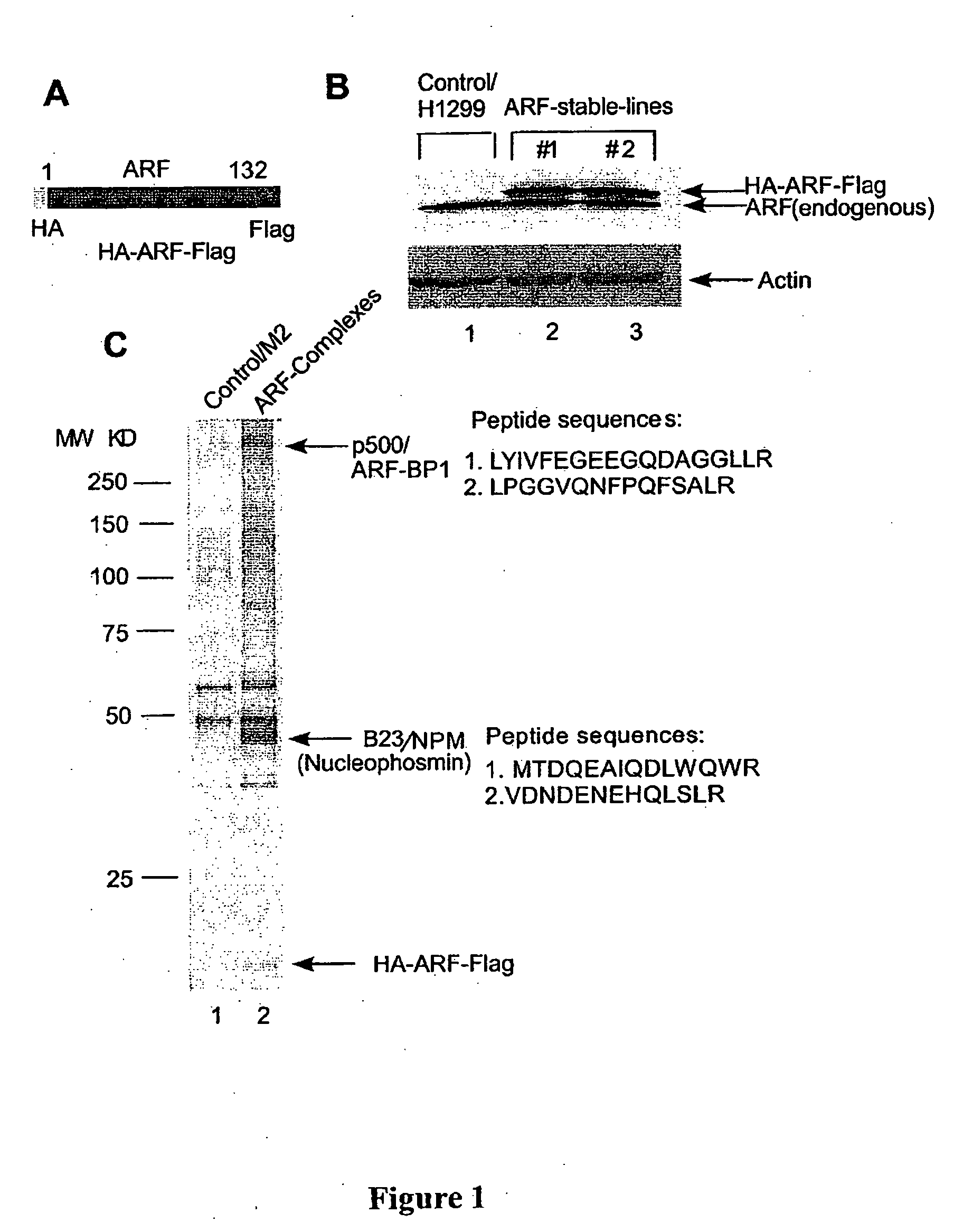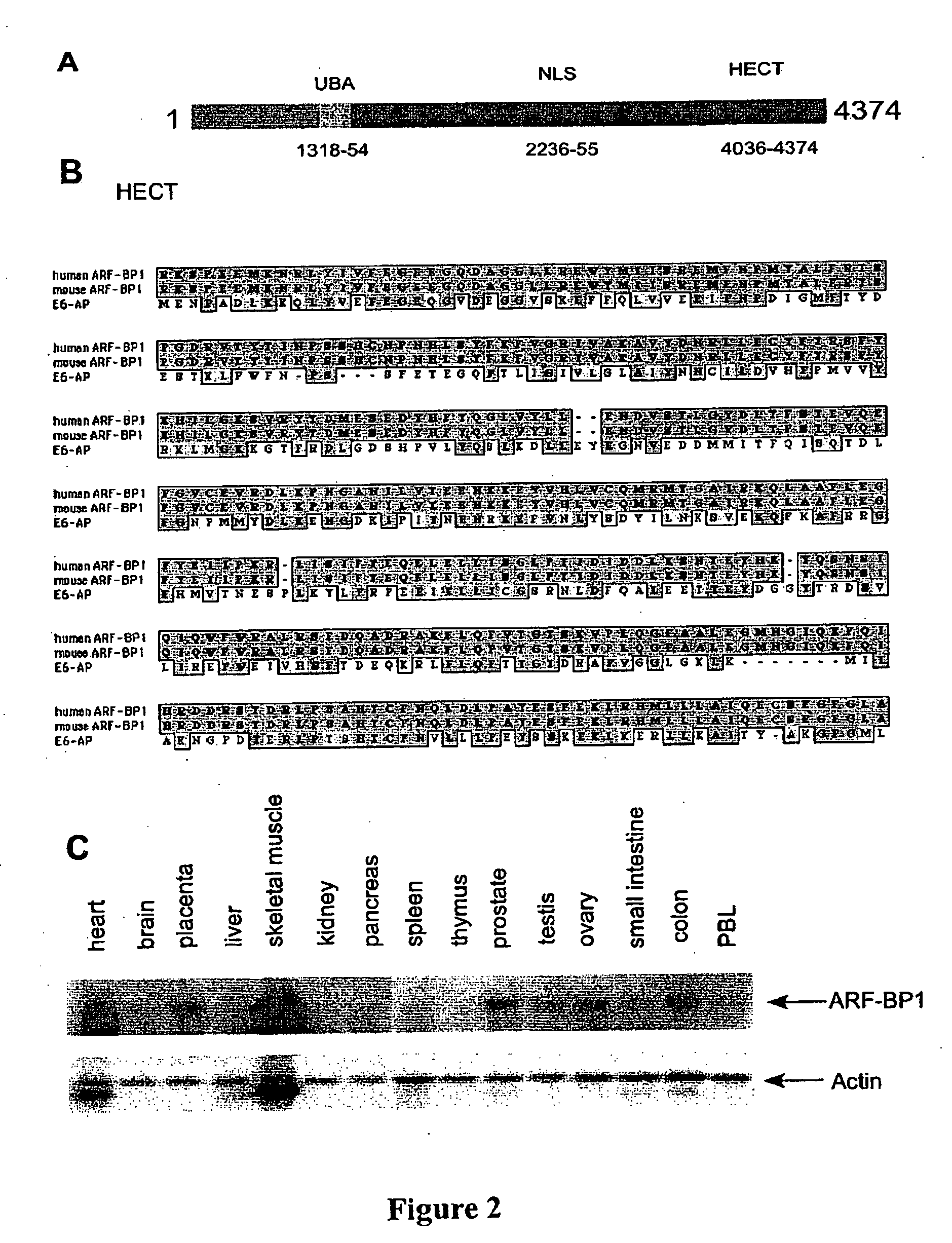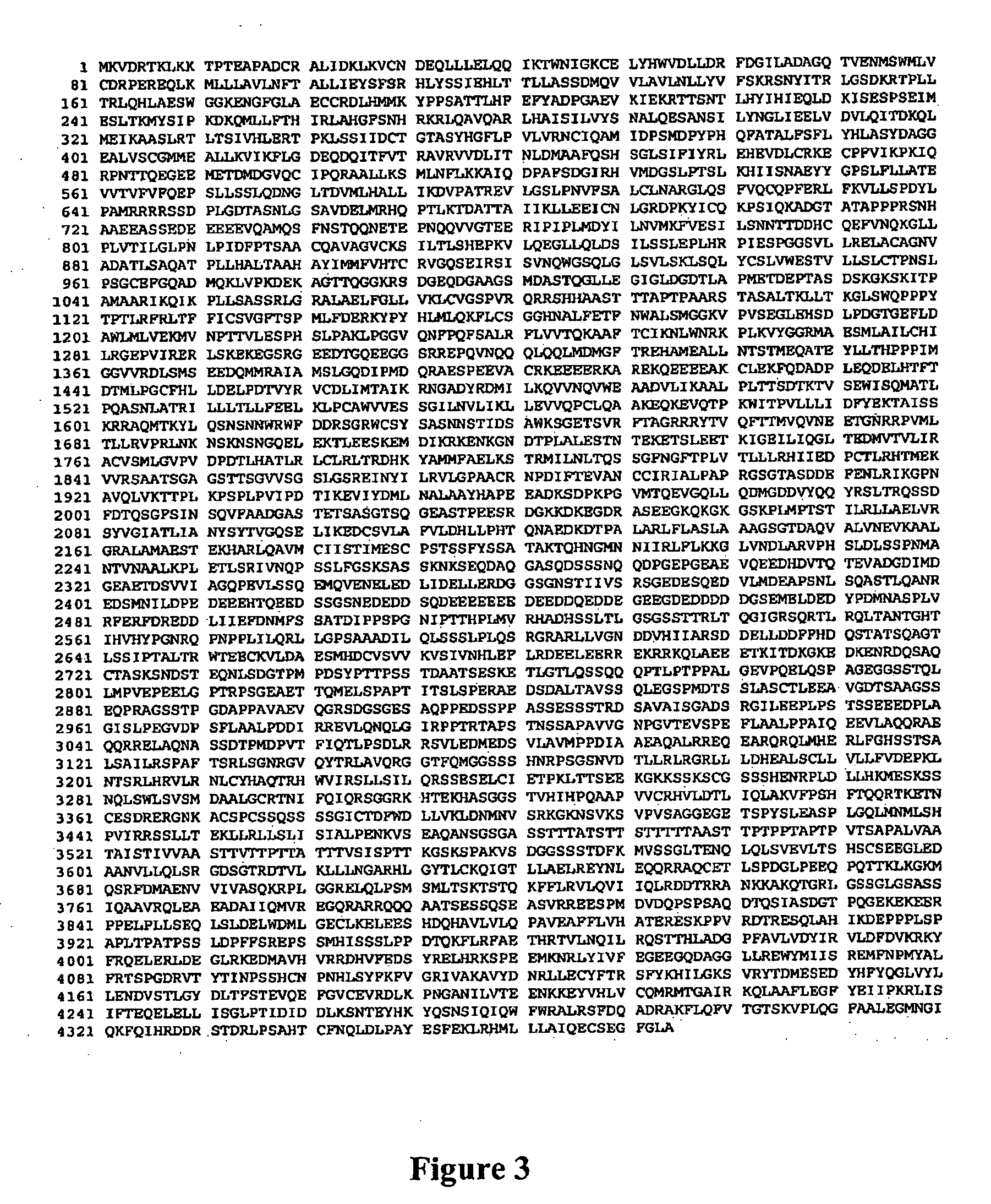ARF-BP1 as mediator of p53-dependent and independent tumor suppression and uses thereof
a p53-dependent and independent tumor technology, applied in the field of p53/mdm2-dependent function of arf, can solve the problems of life-threatening, complex degradation of p53, and disease that remains prevalent in all segments of society, and achieve the effect of assessing the ability of candidate agents
- Summary
- Abstract
- Description
- Claims
- Application Information
AI Technical Summary
Benefits of technology
Problems solved by technology
Method used
Image
Examples
example 2
[0141] This example demonstrates the initial characterization of ARF-BP1, a novel ubiquitin E3 ligase.
[0142] Peptide sequencing of the ARF-BP1 band by mass spectrometry revealed two peptide sequences, matched a single partial cDNA clone in the GeneBank database (accession number Gi 22090626). A small fragment of this protein named UREB1 (upstream initiator-like sequence binding protein 1) was originally identified by the present inventor as a binding protein of the preprodynorphin gene promoter, but its biological functions were previously unknown (Gu, J., Ren, K., Dubner, R., and Iadarola, M. J., Brain Res Mol Brain Res. 24:77-88, 1994).
[0143] A full-length human ARF-BP1 cDNA was assembled by RACE (Rapid amplification of cDNA ends) and homology alignment with the partial cDNA sequences in the database. The human ARF-BP1) cDNA encodes a 4374 amino acid protein (FIGS. 2A and 3) and the full length protein of ARF-BP1 is more than 3000 amino acids longer than the published UREB1 sequ...
example 3
[0145] This example demonstrates that ARF-BP1 interacts with ARF both in vitro and in vivo.
[0146] To confirm the physical interaction between ARF and ARP-BP1, the in vitro binding of ARF-BP1 to ARF was evaluated. The ARF polypeptide can be roughly divided into two major functional domains: an N-terminus region encoded by the unique 1β exon (N-ARF: residues1-64), which are critical for ARF-mediated p53 activation as well as p53-independent ARF functions, and a C-terminal region (C-ARF:residues 65-132), not conserved between human and mouse counterparts and of uncertain function. As shown in FIG. 5A, 35S-labeled ARF-BP1(1-1014), a polypeptide comprising the N-terminal 1014 residues of ARB-BP1, did not associate with immobilized GST-ARF (lanes 7-9). In contrast, however, 35S-labeled ARF-BP1 (1015-4574) strongly bound both full-length ARF (GST-ARF, lane 3) and the N-terminal ARF domain (GST-N-ARF, lane 5) but not the C-terminal ARF domain (GST-C-ARF, lane 6) or GST alone (lane 2). Inte...
example 4
[0148] This example demonstrates that the HECT domain of ARF-BP1 has an ubiquitin ligase activity that is strongly inhibited by ARF.
[0149] ARF can stabilize p53 by sequestering Mdm2 in the nucleolus and can also stabilize p53 by directly inhibiting the enzymatic activity of Mdm2. To examine whether ARF can also inhibit the ubiquitin ligase activity of ARF-BP1, ARF-BP1 was tested for enzymatic activity in an in vitro assay using purified components. The GST-ARF-BP1 (3760-4374) polypeptide (FIG. 3; SEQ ID NO: 2), which includes the HECT domain of ARF-BP1, was expressed in bacteria and purified to near homogenicity. As shown in FIG. 5D, ubiquitin-conjugated forms of ARF-BP1 were readily formed when GST-ARF-BP1 (3760-4374 ) was incubated in the presence of ubiquitin, E1, and an E2 (UbcH5c) (lane 2). Notably, this activity was strongly represented by recombinant full-length ARF (lane 3). Moreover, consistent with the binding results (FIG. 5A), the evolutionarily conserved N-terminal reg...
PUM
| Property | Measurement | Unit |
|---|---|---|
| pH | aaaaa | aaaaa |
| pH | aaaaa | aaaaa |
| pH | aaaaa | aaaaa |
Abstract
Description
Claims
Application Information
 Login to View More
Login to View More - R&D
- Intellectual Property
- Life Sciences
- Materials
- Tech Scout
- Unparalleled Data Quality
- Higher Quality Content
- 60% Fewer Hallucinations
Browse by: Latest US Patents, China's latest patents, Technical Efficacy Thesaurus, Application Domain, Technology Topic, Popular Technical Reports.
© 2025 PatSnap. All rights reserved.Legal|Privacy policy|Modern Slavery Act Transparency Statement|Sitemap|About US| Contact US: help@patsnap.com



